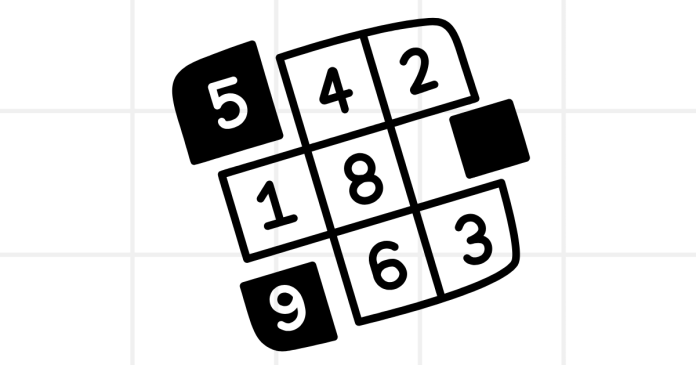Sudoku is a logic-based number puzzle that requires filling a 9×9 grid with numbers 1 through 9 such that each row, column, and 3×3 subgrid contains no repeated numbers. Below is a common algorithm to solve a Sudoku puzzle:
Step-by-Step Algorithm
- Input:
- A partially filled 9×9 Sudoku grid.
- Check Validity:
- Ensure that the initial grid follows Sudoku rules: no duplicate numbers in any row, column, or 3×3 subgrid.
- Backtracking Algorithm:
- Use recursion and trial-and-error to solve the puzzle.
- Here’s the breakdown:
Sudoku Solver Algorithm
- Find an Empty Cell:
- Traverse the grid to find an empty cell (denoted by 0 or another placeholder).
- Try Numbers 1 to 9:
- For the empty cell, try placing numbers 1 through 9.
- Check Validity:
- After placing a number, check if it is valid:
- It must not repeat in the same row.
- It must not repeat in the same column.
- It must not repeat in the same 3×3 subgrid.
- After placing a number, check if it is valid:
- Recursive Call:
- If the number is valid, place it in the cell and recursively try to solve the rest of the grid.
- Backtrack:
- If placing a number leads to an invalid state later, remove it (backtrack) and try the next number.
- Repeat:
- Continue until the entire grid is filled.
- Solution Found:
- If all cells are filled without conflicts, the puzzle is solved.
Pseudocode
def solve_sudoku(grid):
# Find an empty cell
row, col = find_empty_cell(grid)
if row is None: # No empty cells left
return True
for num in range(1, 10): # Try numbers 1 to 9
if is_valid(grid, num, row, col):
grid[row][col] = num # Place the number
if solve_sudoku(grid): # Recursive call
return True
grid[row][col] = 0 # Backtrack
return False
def is_valid(grid, num, row, col):
# Check row, column, and 3x3 subgrid for validity
# Implementation details here...
pass
def find_empty_cell(grid):
# Find the first empty cell (0)
for r in range(9):
for c in range(9):
if grid[r][c] == 0:
return r, c
return None, None
Complexity
- Time Complexity: Depends on the number of empty cells and the constraints. Worst-case: O(9N)O(9^{N}), where NN is the number of empty cells.
- Space Complexity: O(N)O(N) due to recursive calls.
Applications
- Writing Sudoku solvers in Python, Java, or C++.
- Developing mobile apps for Sudoku games.
- Automating Sudoku-solving processes.



